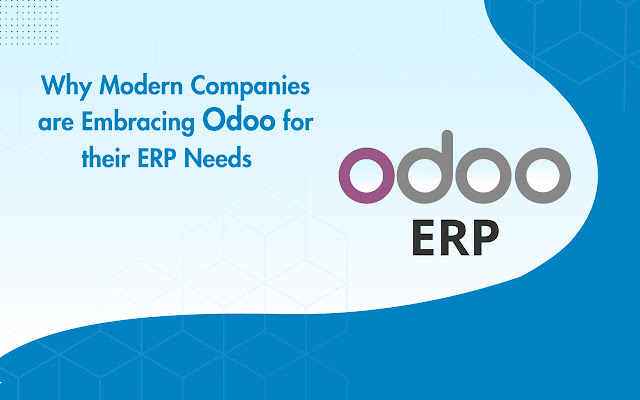In the ever-evolving landscape of modern business, companies are constantly seeking innovative solutions to streamline their operations, boost productivity, and gain a competitive edge. One such solution that has been gaining widespread attention and adoption is Odoo, an open-source enterprise resource planning (ERP) platform.
In this blog, we’ll explore why Odoo has become the ERP system of choice for many forward-thinking companies, along with statistics, companies thriving in Odoo, and answers to some common questions.
What is Odoo?
Odoo is a powerful business management software that helps companies of all sizes streamline their operations. It offers various modules for tasks like accounting, inventory management, sales, and more.
With its user-friendly interface and customizable features, Odoo makes it easy for businesses to manage everything from customer relations to finances on one integrated platform, boosting efficiency and productivity.
Statistics: The Growing Popularity of Odoo
According to a survey by Odoo, over 4.5 million people use Odoo for their business needs.
Odoo’s community edition has been downloaded over 5 million times.
In 2022, Odoo reported a growth rate of 70%, indicating its rapid adoption in the market.
Modern ERP for Modern Businesses
As businesses grow and diversify, managing operations efficiently becomes increasingly complex. Traditional ERP systems often come with hefty price tags, long implementation times, and rigid structures that don’t adapt well to changing needs.
This is where Odoo stands out:
Cost-Effective Solution: Odoo’s open-source nature means that the software itself is free, significantly reducing upfront costs compared to proprietary ERP systems.
Flexible and Customizable: Odoo’s modular architecture allows businesses to select and customize the exact features they need, making it adaptable to a wide range of industries.
Quick Implementation: Odoo boasts shorter implementation times compared to traditional ERP systems, thanks to its user-friendly interface and extensive library of pre-built modules.
Community Support: With a large and active community of developers and users, Odoo enjoys ongoing enhancements, regular updates, and a wealth of available resources.
Now, let’s delve deeper into why modern companies are embracing Odoo for their ERP needs.
The Rise of Odoo: A Statistical Perspective
To understand the growing popularity of Odoo, let’s take a look at some compelling statistics:
Widespread Adoption: According to Odoo’s official website, over 5 million users and 25,000 businesses have already implemented Odoo across the globe.
Cost Savings: Studies have shown that businesses can save up to 35% on their ERP costs by choosing Odoo over proprietary alternatives. These savings can be invested in other critical areas of the business.
Rapid Growth: Odoo’s revenue has been consistently growing at an impressive rate of 60% year-over-year, as reported in their financial statements.
Companies Thriving with Odoo
Numbers are great, but real-world success stories paint an even more vivid picture. Let’s explore a few examples of companies that have thrived with Odoo:
Ursa: A leading European manufacturer of mineral wool insulation, Ursa implemented Odoo to manage its complex production processes. The result? A 40% reduction in lead times and a 20% boost in productivity.
DreamHarvest: This US-based organic food distributor turned to Odoo to unify their operations, from inventory management to sales. The result? A 30% increase in sales within the first year of implementation.
Salamander: This global footwear brand chose Odoo to integrate their e-commerce and point-of-sale systems. The outcome? A 50% reduction in manual data entry and a 25% boost in sales.
Flecto Industries is a medium-sized manufacturing company that struggles with inefficiencies in its production process.
BloomRetail is a retail startup that faces challenges managing its inventory across multiple locations. Odoo’s inventory management module provided real-time insights, helping BloomRetail optimize its stock levels and reduce excess inventory by 20%.
TechSol Services is an IT services provider that needed to streamline its project management and resource allocation. With Odoo’s project management module, TechSol Services improved project delivery timelines by 25% and achieved a 10% increase in client satisfaction.
Wrapping Up
In an era where agility and efficiency are paramount for business success, Odoo has emerged as a versatile and cost-effective ERP solution that empowers modern companies to thrive. Its modular design, ease of use, scalability, and integration capabilities make it an attractive choice for businesses of all sizes and industries. As we’ve seen through statistics and real-world examples, Odoo is not just software; it’s a strategic asset that can revolutionize the way companies operate.

Comments
Post a Comment